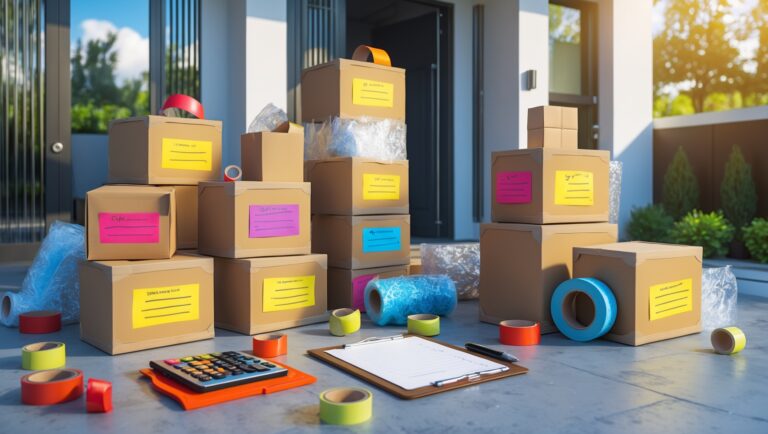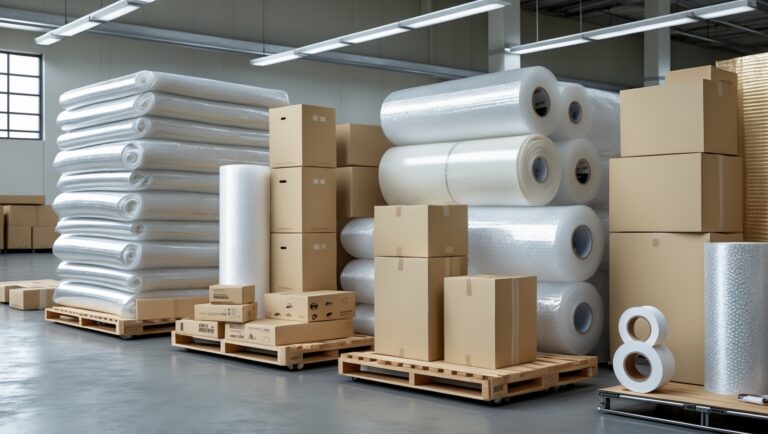Moving Truck Loading Techniques: Step-by-Step Strategies for Damage-Free Moves
Introduction: Why Proper Truck Loading Matters
Loading a moving truck may seem straightforward, but the difference between a haphazardly packed truck and one loaded with care can mean the difference between a smooth, damage-free move and a logistical nightmare. Whether you’re a moving company looking to train your crews or a DIY mover safeguarding your valuables, mastering proper truck loading techniques is essential. Poorly loaded trucks lead to shifting cargo, broken furniture, crushed boxes, and even accidents on the road. In contrast, a well-organized load maximizes available space, protects items from damage, and ensures a safer, more efficient move. This guide provides a step-by-step, practical approach to loading moving trucks—covering everything from pre-loading preparation to advanced space-maximizing strategies and real-world safety considerations. Let’s dive into the science and art of damage-free moving truck loading.
Pre-Loading Preparation: Setting the Stage for Success
Gather Essential Supplies
- Furniture pads and moving blankets: Prevent scratches and absorb shocks.
- Stretch wrap: Secures drawers and doors on furniture.
- Moving straps and tie-downs: Stabilize large items and prevent shifting.
- Hand trucks and dollies: Safely move heavy or awkward items.
- Ramps: Essential for loading heavy pieces with less strain.
- Boxes in uniform sizes: Easier to stack and stabilize.
- Labels and markers: Identify fragile items and destination rooms.
Assess the Load
Take inventory of all items to be loaded. Group by size, weight, and fragility. Note especially large, heavy, or awkward items such as pianos, appliances, or long furniture pieces. Measure both the truck interior and largest items to plan their placement. Identify items that require special handling or extra padding. This pre-planning step saves time and reduces risk of mid-load rearranging.
Prepare Items for Transport
- Disassemble furniture: Remove legs from tables, take apart bed frames, detach mirrors from dressers. Keep hardware in labeled bags taped to the corresponding piece.
- Empty contents: Remove all contents from drawers, shelves, and cabinets unless specifically designed for transport.
- Wrap and protect: Use moving blankets on all wood, glass, and upholstered surfaces. Wrap electronics in anti-static bubble wrap.
- Seal boxes securely: Reinforce with packing tape and label as fragile if needed.
Strategic Loading Order: The Golden Rules
Heaviest Items Go First
Start with the largest, heaviest items—refrigerators, washers, sofas, armoires. Place these against the truck cabin wall to distribute weight evenly over the axles, which is crucial for safe vehicle handling. Load sofas and mattresses vertically when possible to save space, but always protect with pads and secure with straps.
Distribute Weight Evenly
Alternate heavy and light items from side to side and front to back. An unbalanced load increases risk of tipping, makes driving hazardous, and can cause cargo to shift dangerously. If the truck is not full, anchor the load with straps to prevent everything from sliding forward during braking.
Fragile and Light Items Last
Place lighter, fragile boxes and items on top of heavier, sturdier objects. Never stack heavy boxes on top of fragile ones. Keep fragile items as close to the truck’s rear door as possible so they’re loaded last and unloaded first, minimizing their time in the truck and reducing handling.
Advanced Space Optimization Techniques
Stacking and Layering
- Build tiers: Stack boxes and furniture in tiers from floor to ceiling, filling gaps with soft, lightweight items like linens or cushions.
- Align box seams: Stack boxes so seams are staggered, like laying bricks, for added stability.
- Upright furniture: Stand sofas, mattresses, and tabletops on end to save space, always padding appropriately.
Fill Gaps and Void Spaces
- Use soft items—pillows, bags of clothing, bedding—to fill spaces between furniture and truck walls.
- Place small boxes or odd-shaped items under tables, chairs, or desks.
- Never leave large empty spaces; these allow items to shift during transport.
Use Vertical Space Wisely
Maximize cubic footage by packing to the ceiling. Place sturdy, heavy boxes at the bottom and lighter ones on top. Use tie-down straps every 2–3 feet vertically to create secure layers and prevent toppling during transit.
Securing the Load: Safety Comes First
Strapping Down and Anchoring
- Use ratchet straps or rope to anchor large items directly to truck tie-down rails.
- Secure each tier as you go—don’t wait until the end to strap everything.
- For tall or thin items (like mattresses), use vertical tension by strapping to multiple anchor points.
Protecting Against Shifting
- Place anti-slip mats under heavy appliances to reduce sliding.
- Wedge soft items or empty boxes in gaps to hold items snugly in place.
- Double-check that nothing can roll or tip as you close each section of the load.
Special Handling: Appliances, Electronics, and High-Value Items
Large Appliances
- Defrost refrigerators and freezers 24 hours before loading.
- Secure doors with stretch wrap or rope, but avoid taping directly to the finish.
- Keep appliances upright and as close to the front of the truck as possible.
- Place a moving pad between appliances and other items to prevent dents.
Electronics
- Whenever possible, pack in original boxes with foam inserts.
- Mark boxes as “FRAGILE” and keep them on top of heavier, stable loads.
- Never stack heavy boxes on electronics.
High-Value or Sentimental Items
- Transport jewelry, small electronics, and important documents separately in your own vehicle.
- If large valuables must go in the truck, place them in the center of the load, surrounded by soft items, and clearly mark the boxes.
Common Loading Mistakes—and How to Avoid Them
Underestimating Truck Size
Err on the side of a slightly larger truck. Overloading or jamming items leads to breakage and makes efficient packing impossible. Many moves falter because clients underestimate the cubic footage needed.
Ignoring Weight Distribution
Never concentrate all heavy items in one area. This strains truck suspension, increases the risk of tip-overs, and complicates unloading. Always plan for balanced loading front-to-back and side-to-side.
Poor Use of Padding
Insufficient padding results in scratches, dents, and broken furniture. Always use moving blankets on wood, glass, and delicate finishes. Secure pads with stretch wrap or tape (tape only to pads, not furniture).
Neglecting Securement
Forgetting to use straps or tie-downs is a recipe for disaster. Even a short drive can jostle items into each other, causing preventable damage. Secure each load level as you go, not just at the end.
Professional Tips for Efficiency and Speed
Designate a Load Master
Assign one experienced person to direct the loading process. This ensures consistency, maximizes space, and prevents confusion. The load master reviews the inventory, plans the order, and gives clear instructions to the team.
Pre-Stage Items
Line up items outside the truck in the order they’ll be loaded. This reduces downtime and prevents last-minute re-arranging. Keep delicate and high-value items separate so they’re easy to access at the right moment.
Teamwork and Communication
- Use hand signals and verbal cues when maneuvering heavy items.
- Lift with your legs, not your back, and always have a spotter for awkward loads.
- Communicate clearly about fragile or unusually heavy items before moving them.
Unloading: The Final Step
Unloading is the reverse of loading, but with its own risks. Open the truck doors slowly, as items may have shifted. Remove straps and pads carefully, keeping an eye out for items that may tip. Unload fragile boxes and light items first, followed by heavy furniture and appliances. Have a clear plan for where each item goes in the destination space to speed up the process and reduce handling. Inspect all items for damage as they’re unloaded, and note any issues immediately for insurance or claims purposes.
Conclusion: The Payoff of Proper Loading
Taking the time to load a moving truck properly pays dividends in safety, efficiency, and peace of mind. By following a systematic approach—preparing thoroughly, loading with strategy, securing each tier, and avoiding common mistakes—you dramatically reduce the risk of costly damage and wasted space. For moving companies, these techniques translate to happier clients, fewer claims, and a reputation for professionalism. For DIY movers, they mean fewer headaches and a smoother transition. Remember, the best moves are those where everything arrives in the same condition it left, and the truck is used to its full capacity without incident. Invest in the right tools, practice good communication, and always prioritize safety. With these step-by-step strategies, you’ll master the art of damage-free moving truck loading and set yourself up for stress-free, successful moves every time.






